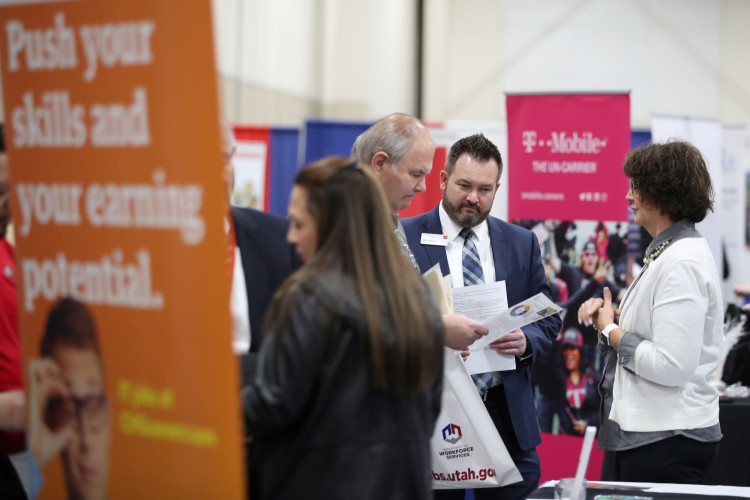The U.S. economy added fewer jobs than expected in July, with nonfarm payrolls expanding by 187,000, slightly below the Dow Jones estimate of 200,000. Despite the slower growth, the labor market remains tight, with the unemployment rate falling back to 3.5%, just above the lowest level since late 1969.
The Labor Department's employment report also showed that job growth in May and June was revised lower, potentially indicating a slowdown in labor demand following the Federal Reserve's substantial interest rate hikes. However, with 1.6 job openings for every unemployed person in June, the moderation in hiring may be due to companies struggling to find workers rather than a decrease in demand.
Average hourly earnings, a key figure as the Federal Reserve fights inflation, rose 0.4% for the month, translating to a 4.4% annual pace. Both numbers were higher than the respective estimates for 0.3% and 4.2%. The labor force participation rate held at 62.6% for the fifth consecutive month, while the rate for those in the 25-to-64 "prime" age group slightly decreased to 83.4%.
Employment gains in July were led by the healthcare sector, which added 63,000 jobs. Other sectors contributing included financial activities (19,000), construction (19,000), and wholesale trade (18,000). The leisure and hospitality sector, which has been a leading sector for most of the recovery in the Covid pandemic era, added just 17,000 jobs, consistent with a slowing trend after averaging gains of 67,000 a month in the first three months of 2023.
Despite the slowing job gains, the economy has proved resilient against a variety of challenges, particularly a series of 11 Federal Reserve interest rate hikes aimed at bringing down inflation. This resilience has led many economists to believe that the Fed's fastest rate hiking cycle in more than 40 years is probably over.
However, the full effect of the rate increases has not been felt yet, and economists worry that the Fed could overtighten and send the economy into recession. Inflation data of late has been moving in the right direction, but the Fed's preferred gauge is still showing prices rising at a 4.1% annual rate, or more than double the central bank target.
The mixed report did not change growing perceptions among economists that the Fed could engineer a "soft landing" for the economy, though much would depend on the direction of inflation after annual increases in prices slowed sharply in June. The U.S. central bank has raised its policy rate by 525 basis points since March 2022.






